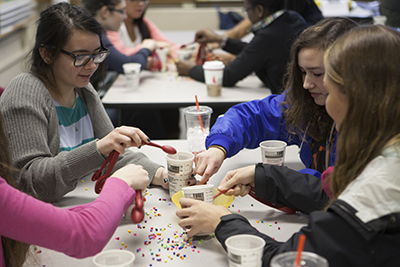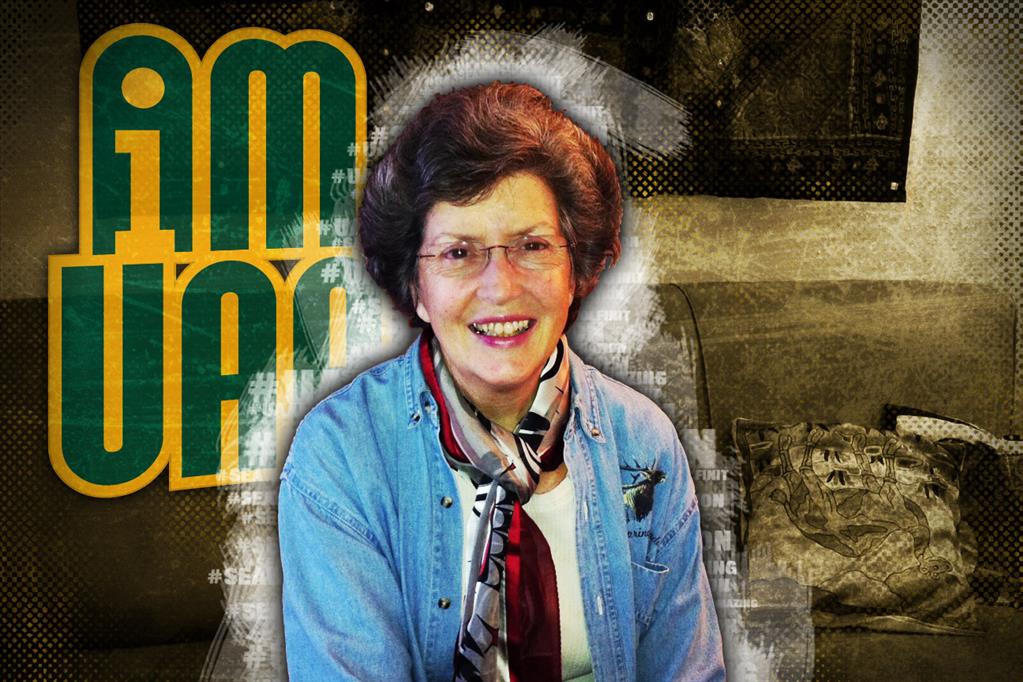Professor analyzes bullying and substance use among Anchorage youth
by Jamie Gonzales |
 We think of school as a safe place to send kids, but bullying changes that dynamic
for one out of every five kids in the U.S. UAA's Gabriel Garcia, assistant professor
of public health, partnered with Anchorage United for Youth (AUY) to explore the link between substance use and bullying here in Anchorage. The
statistics are sobering.
We think of school as a safe place to send kids, but bullying changes that dynamic
for one out of every five kids in the U.S. UAA's Gabriel Garcia, assistant professor
of public health, partnered with Anchorage United for Youth (AUY) to explore the link between substance use and bullying here in Anchorage. The
statistics are sobering.
On par with U.S. national statistics, about one in five Anchorage School District (ASD) kids said they were victims of bullying at school. Youths who are bullied are 60 percent more likely to drink alcohol, 90 percent more likely to binge drink and 35 percent more likely to use marijuana, cocaine or prescription drugs.
Every year the Center for Disease Control and Prevention conducts the nationwide Youth Risk Behavior Survey and publishes the data on health risk behaviors among high school students. Bullying is an emerging public health issue now addressed in the survey.
"The question of bullying wasn't asked in the earlier versions of the Youth Risk Behavior Survey," says Professor Garcia. "It wasn't asked until 2007."
But the effects of bullying have been making national headlines for quite some time.
"A lot of the news that we see when we talk about bullying is either suicide attempts or actual suicide," he says. "When you actually look at that data, there is that relationship as well."
The question Professor Garcia wanted to answer, though, was 'Is there a relationship between bullying and substance use?' Anecdotally it makes sense, but the numbers are what help to inform policy and spur change. The numbers, based on his analysis of Anchorage data from the CDC Youth Risk Behavior Survey, say yes.
"When I ran the analysis, I wasn't very surprised with the findings," he says. "I did find that there is a significant relationship between bullying and substance use."
The theory behind it is simple. "Bullying is a form of stress and one of the outcomes of stress is engaging in risk behaviors like substance use."
Professor Garcia's analysis is the first of its kind done using Anchorage data and as part of his partnership with AUY he worked with Sarah Sledge to report their findings to more than 50 AUY community partners.
"They used the results in a variety of ways-informing how they develop new programs and applying for grants are the two major ones," says Professor Garcia. It's gratifying to hear first-hand how his research and analysis is shaping youth services in Anchorage.
"When I attend Anchorage United for Youth meetings, I hear from the different representatives that it was really helpful for them in applying for grants, keeping their program sustainable, but also in terms of guiding them in how they can tweak their programs and better reach out to youth."
A product of ASD himself, his research feels personal. His family moved to Anchorage from the Philippines when he was 12 and he graduated from Dimond High School before heading to college at University of California-Davis and Boston University. He returned to UAA as a research associate for the Institute for Circumpolar Health Studies, working with Larry Weiss to create the Master of Public Health program, which just celebrated its 10-year anniversary.
After earning his Ph.D. from UCLA, Professor Garcia returned to UAA and now teaches in that Master of Public Health program he helped to create.
In addition to his youth risk behavior analyses correlating bullying and substance use, Professor Garcia is also engaged in research with his UAA colleagues, Professor of Psychology E.J. David and Professor of Journalism and Public Communications Joy Chavez Mapaye, on the health behaviors and health conditions in Asian Pacific Islanders in Anchorage, Barrow and Kodiak, the three top population centers for the demographic.
"I'm glad to be back here working with the community I grew up in," he says. "That's really my research agenda-to address the public health problems of my community."
 "Professor analyzes bullying and substance use among Anchorage youth" is licensed under a Creative Commons Attribution-NonCommercial 4.0 International License.
"Professor analyzes bullying and substance use among Anchorage youth" is licensed under a Creative Commons Attribution-NonCommercial 4.0 International License.














